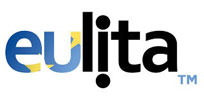Effective localization of large websites is a critical aspect of expanding global reach and engaging diverse audiences. This comprehensive guide aims to provide valuable insights and practical tips for successfully localizing large-scale websites. By following these strategies and best practices, businesses can enhance user experience, improve brand perception, and drive international growth.
Understanding the Significance of Website Localization
Website localization involves adapting digital content to suit the linguistic, cultural, and functional requirements of specific target markets. It goes beyond mere translation, encompassing aspects such as formatting, multimedia, and regional preferences. The primary goal of localization is to create a seamless and tailored user experience that resonates with local audiences, fostering stronger connections and increasing conversion rates.
Localization becomes even more complex when dealing with large websites that house vast amounts of content. The challenges lie in managing the scale, maintaining consistency, and ensuring quality across multiple languages and regions. To tackle these hurdles effectively, organizations must implement the following strategies:
1. Thorough Planning and Preparation
Localization efforts for large websites necessitate meticulous planning and preparation to ensure a smooth and successful execution. Consider the following key factors during the initial stages:
Content Analysis and Prioritization
Conduct a comprehensive analysis of the website’s content to determine the scope of localization. Identify the types of content that require localization, such as textual elements, images, videos, and audio files. Prioritize content based on its relevance, impact, and user experience to allocate resources efficiently.
Technical Infrastructure Evaluation
Evaluate your website’s technical infrastructure to ensure compatibility with the localization process. Consider the content management system (CMS), translation tools, and hosting platforms employed. Ensure that your website is scalable and capable of accommodating additional languages and content.
Streamlined Localization Workflow
Develop a well-defined and streamlined localization workflow that encompasses every stage of the project, from content creation to final delivery. Clearly define roles and responsibilities, establish realistic timelines and milestones, and foster effective communication among all stakeholders involved.
Budget Allocation
Localization endeavors, particularly for large websites, can be resource-intensive. Allocate a realistic budget that accounts for the scale of localization, the number of languages involved, and the desired level of quality. Additionally, consider leveraging machine translation combined with human post-editing to optimize costs while maintaining high standards.

2. Selecting the Right Localization Partner
This is maybe the most relaxing phase because it is quick and requires no previous appointment. Contact a qualified translator to get papers properly translated usually within a single business day. These documents meet all legal requirements and are recognized in international legal transactions.
3. Cultural Adaptation for Enhanced
Successful website localization goes beyond accurate translation and requires cultural adaptation to resonate with the local audience. Consider the following factors when adapting your website for different regions:
Cultural Sensitivity
Adhere to cultural norms and values to avoid offending the local audience. Consider factors such as language, symbols, imagery, and cultural references. Adapt content to suit local preferences and customs while maintaining consistency with the brand message.
Regional Preferences
Acknowledge regional differences in language, currency, measurement units, date and time formats, and color symbolism. Cater to local preferences and avoid assumptions that may lead to miscommunication or confusion. Conduct extensive research and incorporate feedback from local stakeholders to ensure accurate cultural adaptation.
Multimedia Localization
Localize multimedia content, including images, videos, and audio files, to suit local preferences and cultural context. Consider aspects such as accent, tone, and style while adapting multimedia content. Ensure that the visuals and sounds resonate with the local audience and convey the intended message effectively.

4. Testing and Quality Assurance
Thorough testing and quality assurance are essential components of successful website localization. Consider the following aspects during the testing and quality assurance phase:
Functional Testing
Test the functionality of the localized website to ensure seamless user experience across all languages and regions. Ensure that all features, including links, buttons, and forms, are working as intended. Conduct extensive testing across different devices and browsers to ensure compatibility and optimal performance.
Linguistic Testing
Verify the accuracy and quality of the localized content through extensive linguistic testing. Test the translated content for accuracy, consistency, and adherence to cultural and regional norms. Utilize professional linguists and subject matter experts to conduct thorough reviews and validations.
User Acceptance Testing
Conduct user acceptance testing to gather feedback from local audiences and identify areas for improvement. Utilize tools such as surveys, feedback forms, and user testing sessions to gather feedback and incorporate it into the localization process.
Key Takeaways
Large website localization presents unique challenges and requires a comprehensive approach to ensure successful execution. Thorough planning, careful selection of localization partners, cultural adaptation, and thorough testing are key components of a successful localization effort. By following these best practices and strategies, businesses can enhance user experience, improve brand perception, and drive international growth.





